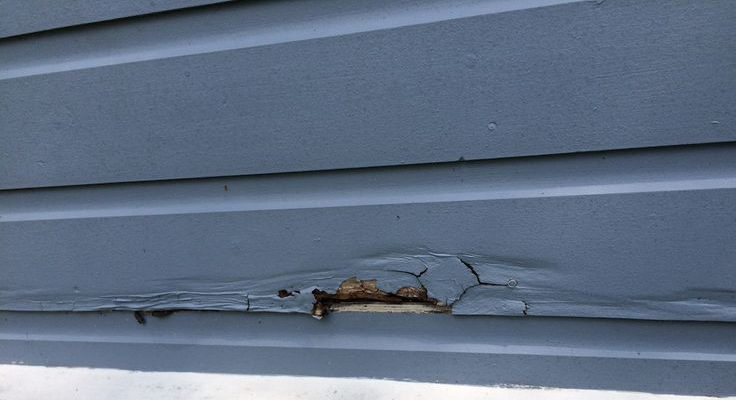It’s something you and your neighbors see every day. But when it comes time for home improvements, it isn’t always given its due. It’s your siding. While siding might not be on your top home improvement list, it is vital to your home’s overall aesthetics, energy efficiency, and integrity. A well-maintained, high-quality siding can make a significant difference in your home’s curb appeal as well as its property value. Your siding protects your home against the elements, protecting it from extreme cold and heat, weather inclement, debris, and pests.
What happens if your siding starts to crack, fade or become discolored? You run the risk of your home becoming a victim to major structural damage.
You may notice that your siding looks a bit worse. It’s better to replace it before you have serious damage to your home.
How can you tell when it is time to replace your siding? Champion’s home improvement experts will help you identify the signs to watch out for.
- Cracked, warped, or rotting siding These are the signs that your siding needs to be replaced. Take a look around your house to make sure everything is in order. Small cracks can indicate a larger problem. Take a look around. Do you feel the layer underneath is solid? It might be time for a professional to inspect your siding and determine if there is more rot underneath the damaged or cracked areas.
- Your siding may have bubbles or blisters You should be concerned if you see blisters or bubbling beneath your siding. This is a sign that there is a moisture problem. This is an indication that siding is not doing its job. It is supposed to keep moisture out of your home.
- Your siding may be contaminated by mildew, mold, or fungus. You should be cautious about mold, fungus and other growths that may appear on your siding near seams. These substances can grow anywhere there is moisture, so if they are present on your siding, it could be an indication that water has penetrated. Although not all cases of fungus should be alarming, it is worth investigating.
- Siding that is severely faded If siding begins to lose its color or becomes very faded, it is usually a sign that it is losing its weatherproofing. It doesn’t necessarily mean that your siding is useless. However, it’s a good time for you to upgrade your siding before further problems arise.
- Painting your siding is a frequent chore A majority of homes need a new coat of paint every 8-10 year. You may find that you need to paint your home more often than this (e.g., every 3 years), but it could be due to the siding beneath. If your siding is showing signs of wear and tear, you might consider vinyl siding from Champion. It has a long-lasting color, requires little maintenance, and can be a sign that it is time to replace it.
- Higher energy bills There are many factors that can cause your energy bills to go beyond the normal. After you have ruled out any leaks, drafty windows, or faulty insulation, you can look into bad siding as a possible culprit. Siding is designed to keep your home warm and cool, as well as insulating it against the elements all year. Your energy bill will reflect the fact that siding that is old or damaged doesn’t insulate as well.
- Paint peeling inside your home Bad siding can sometimes be visible inside your home. Are you seeing any peeling wallpaper or missing paint in your home? It can cause serious damage to your home if moisture gets through your siding. Unwanted moisture can cause wallpaper and paint problems in your home. These signs are warning signs that you need to act. Do not allow your siding to deteriorate. Champion can provide a free consultation and a comprehensive estimate. Champion vinyl siding is lightweight, stronger, less likely to be damaged by impact, and more easy to clean and install. Champion siding is practically maintenance-free and comes with a lifetime warranty +. Do it for yourself and your home! Do yourself a favor and make new siding a priority in your home’s improvement plan for this year.

